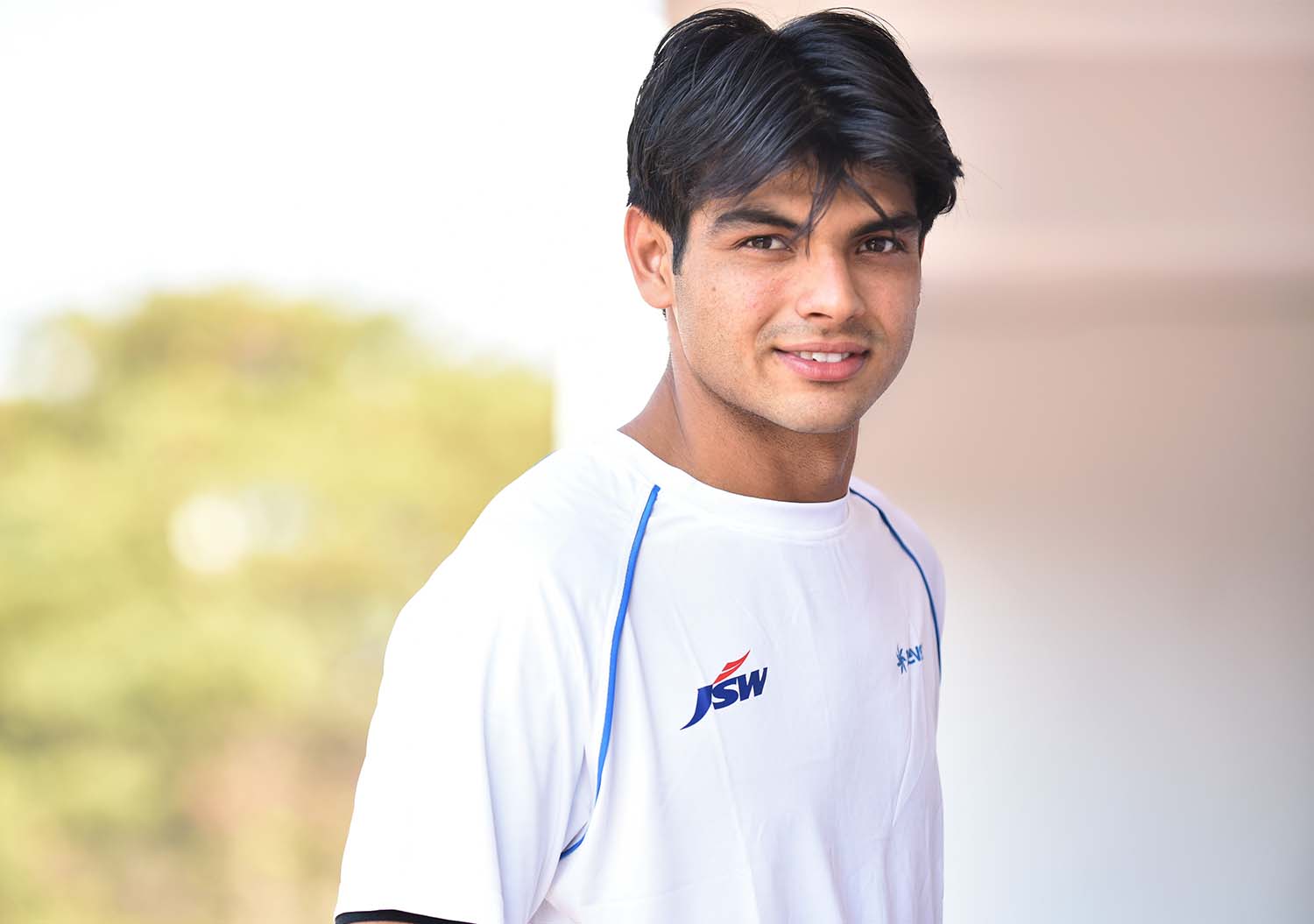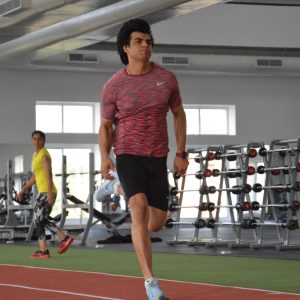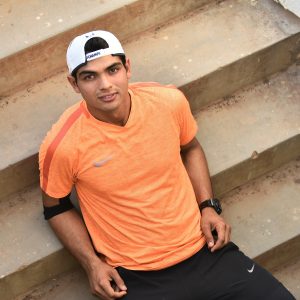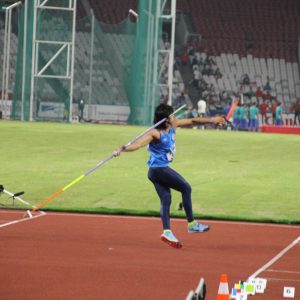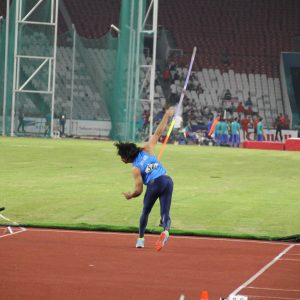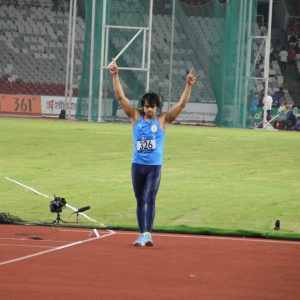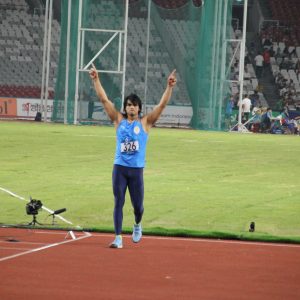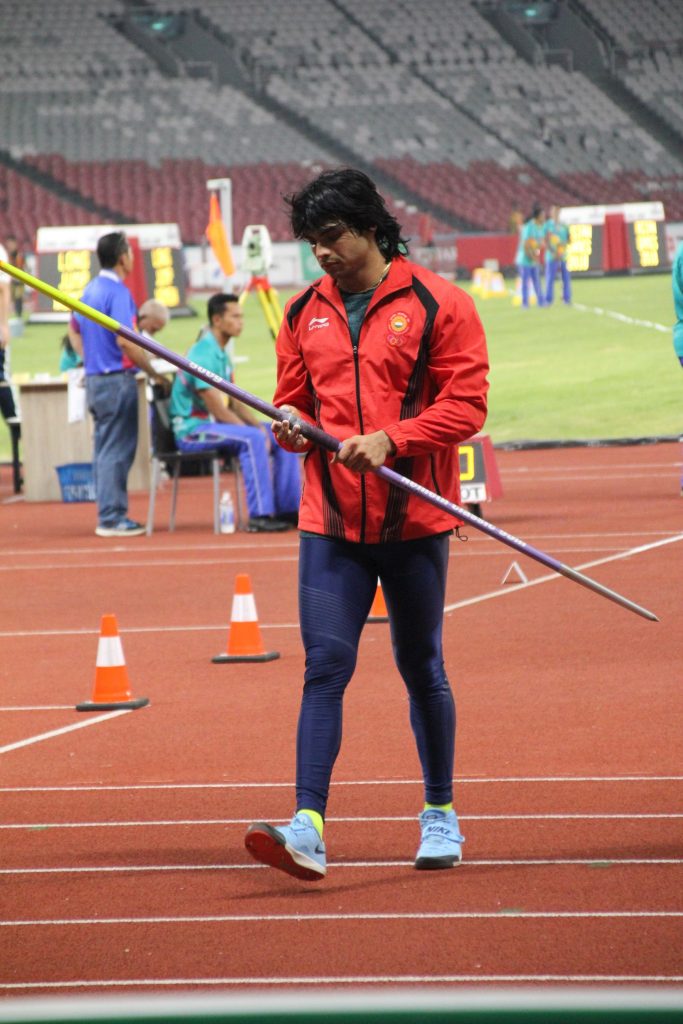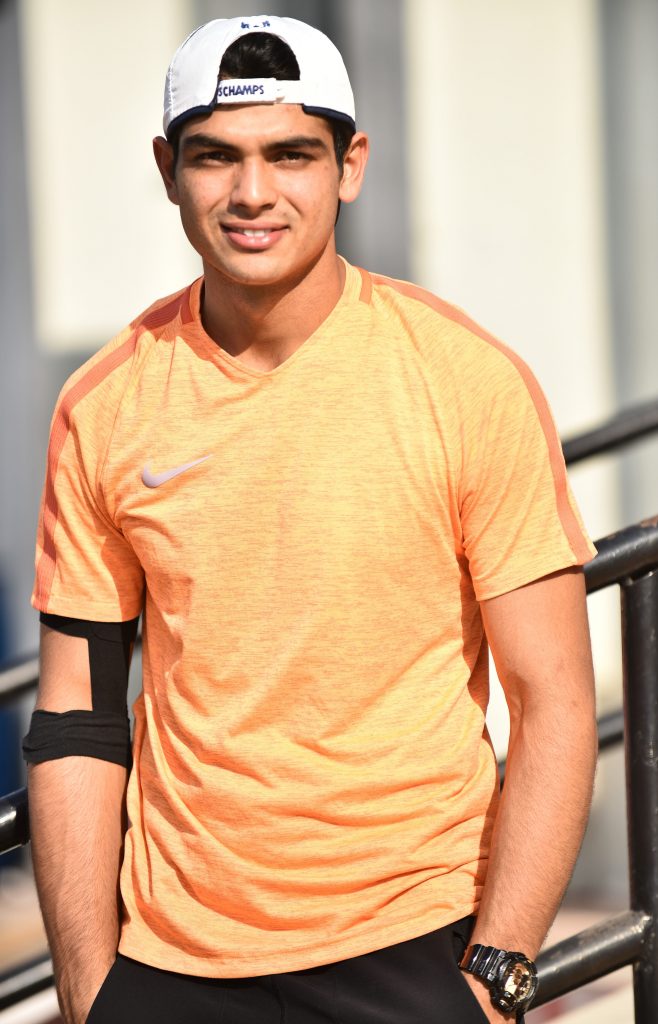Missing out on several important events in the year 2019, when Neeraj Chopra made a comeback, gave us a flashback of his National Record-holding journey.
The National Record holder of Javelin throws, Neeraj Chopra’s “by chance” journey.
“I am a big believer in keeping things simple”, with this colloquial yet profound attitude, Neeraj Chopra, track and field athlete, at a really young age of 22 speared through the stairs of success, highlighting the fresh boom of athletics talent in India.
His positive outlook towards life not only helped him get back on track after an elbow injury which he suffered in the year 2019 while practicing for the World Championship but also is a reason to keep him calm while he runs on the track to throw his javelin which every time looks impeccable. The young athlete wisely knows how to turn gloomy days in his favour and without compromising on hard work and practice he always achieves what he aims for. And that’s why he is the National record holder in Javelin throw as his spear covered a distance of 88.06m in 2018 Asian Games helping him clinch the gold.
In a tete-a-tete with us, Neeraj talks about his “by chance” sports journey and how his quarantine days are going on:
1.How did you start your journey in Javelin throw? How did you develop an interest in sports?
I had a fairly regular upbringing as a child, growing up in a village called Khandra in Panipat, Haryana. My family is into agriculture and we stay in a large joint family of 17 members, with me being the eldest among the children. There wasn’t anyone in my immediate family who was into sports and in fact, I was pampered a fair bit at home growing up. It had reached a point where I had become quite overweight and weighed over 80kgs when I was 13 years old and it was my uncle who coaxed me to start going to the stadium in Panipat for some fitness and to lose weight. It was at this stadium that I got introduced to the javelin, by chance, when I noticed some senior athletes practising. I thought of giving it a try and after a few days, the seniors told me that I have a knack for the sport and should train with them. That’s how Igot introduced to javelin and it was the first and only sport that I took up seriously.
2.You made a grand entry after missing out on several important events of 2019 and grabbed a quota in the Olympics. How did you prepare for it after your elbow injury?
Life has been quite tough over the past two years. First, I had a breakthrough in 2018 when I really made my mark in the senior levels by winning Gold at both the Commonwealth Games and the Asian Games. As I was preparing for an important 2019 season, which included the World Championships, I injured the elbow in my throwing arm and had to undergo surgery that caused me to miss the entire season. It was the longest I’ve been away from the sport so far in my career and it wasn’t easy. Having said that, I knew the only option for me was to focus on my rehabilitation and come back stronger. So that’s what I prepared for post my surgery. I had a good rehab stint at the Inspire Institute of Sport in Bellary, Karnataka, India first and then when I got back to throwing, I moved to NIS Patiala, where I started training under my coach. After that, I had a good training stint for about two months in South Africa and it was there that I took part in a competition and managed to breach the Olympic qualifying mark in my first competition back, which was a great feeling!
3.Now, the Olympics have shifted to the next year, do you feel that the postponement is in your favour as it will give you more time to practice?
Firstly, it was the right decision that was made since the way this pandemic has affected the entire world, it would not have been appropriate for the sport to go on. I had come back well from injury and was looking forward to competing in more competitions to prepare for the Olympics and I would have been well prepared if they were to go on as scheduled. However, with the postponement, I do feel I would be able to get more time to fine-tune some of my technical skills and am looking at it as a positive in terms of my preparations for the Olympics. For now, though, I am waiting for this situation to ease so that I can get back to training since it’s been a while since I was able to throw the javelin and I miss that feeling.
4.What does your practice session look like in quarantine days?
I was lucky to be able to return to India from Turkey (where I was training) just before the lockdown started. Since then, I have been at the NIS in Patiala, first in self-quarantine for two weeks and then indoors as part of the lockdown measures. It’s been tough from a training perspective, and it has been quite a change to get used to since as athletes, we are used to training on a daily basis. Since I can’t use the track, I am focusing on working on my conditioning and fitness to the extent possible using the area in the hostel we are at. I try to keep my routine as normal as I would and train twice a day on most days. While training, I am doing some basic core exercises and working on keeping my overall fitness levels up to the mark.
5.What challenges did you go through when you were in your recovery phase? Did negative thoughts loom over you? How did you cope up with it? When you went through the injury, what was your recovery routine?
It was definitely a challenging phase for me, since like I mentioned, it was the longest time that I’ve been away from my sport in my career so far. I am generally a very positive person and like to keep things simple and uncomplicated. While I was disappointed about the injury, I had my target of the Olympics in mind and knew that if I focused on my rehabilitation, I would be back stronger. So I looked at the small gains I could make and did whatever I was asked to do by my team to ensure my elbow was able to heal completely.
During the initial parts immediately after the injury, I couldn’t use my arm so I focused on maintaining my conditioning and lower body strength, while also working on my non-throwing arm. After I moved to the Inspire Institute of Sport, I was working extensively with my physiotherapists and slowly started lifting weights to get my strength back. Post that, I started throwing the javelin, and gradually built up my throwing ability back to normal. It was a slow and gradual process and I had a lot of support throughout, which was definitely helpful. I think of that time as a period of great learning, as it helped me introspect and learn more about myself as I came through that phase.
6.When you are on the track, what is the one thing that you always keep in your mind to stay focused and calm?
When I am on the track, either at training or in competition, I am just focused on doing my best. I am a big believer in keeping things simple and that is my philosophy to everything in life, including my sport. I feel that if I can do my best each time I’m out there, I would be happy. In sport, there are many things that are beyond your control, so there’s no point worrying about them. What I can control is my own performance, and so my entire focus is on that. This belief is the one thing that keeps me ‘in the zone’ each time I’m out on the track.
7.Life is full of uncertainty, if not a track and field athlete, what would you have been? Which sportsperson inspires you the most?
I honestly am not sure, but given my family background and where I come from, I would probably have been a farmer in Haryana.
A sportsperson I have always been inspired by is the Javelin World Record Holder Jan Zelezny from the Czech Republic. I have spent hours watching his videos when I started javelin and in a way have modelled my javelin approach around him.
8.India is a hub of fresh talent, how do you manage to stay ahead of your peers?
It is heartening to see Indian athletics talent come up over the past few years. There is tremendous talent in our country, and I am especially pleased to see how many javelin throwers from India are now doing exceedingly well in the world rankings, both at the senior and junior levels.
From my perspective, I don’t compare myself to others. I just believe in working on myself and trying to perform my best in every competition. I’m as happy as the next person if a fellow Indian athlete does well.
9.You have represented the country on various international platforms. What difference do you see in the training session of Indian athletes to abroad players?
I think Indian athletes are extremely hard working and dedicated. The one difference between Indian and international athletes is that they have had more exposure from a younger age, which makes their outlook towards the sport different. But I do see a positive change in the mindsets of Indian athletes these days. We are training smarter now, and have the self-belief that we are as good as any other international athlete, and that is a big positive.
10.What would you like to advise your fellow sportsmen to stay ahead in their field?
My advice to fellow sports persons would just be to keep working hard and focus on your training. I’ve said this previously, but I am a big proponent of giving your all to the things you can control. So, my advice would be to put in the hard work at training and prepare yourself to be your best version during the competition. The results will come automatically if you keep pushing yourself to do your best.


